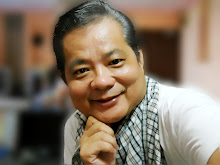The LAST kampung in Singapore !!!

The villages of early Singapore had all given way to high-rise concrete buildings and HDB flats except one which was recently featured in a TV programme and is named The Last Kampung (Village) in Singapore, located at Lorong Buangkok somewhere near the Institute of Mental Health and off Yio Chu Kang Road.
There have been concerns of whether the government would acquire the land for other purposes but the land owner and the residents in the kampung seem to be taking it in their own stride because the land was actually an inheritance passed down from the foreparents and so the descendants being traditional Chinese, are relunctant to part with it for any sum of money, at least for now.
When I visited the kampung with my wife yesterday morning, it was like video fast rewinding for me personally because the environmental settings and features were similar to what I have been through in my younger days. Some of the typically common scenes in kampungs were houses built with 3-foot tall concrete walls and sides of the house were covered with planks and topped with a zinc-roof, coconuts lying on the ground, that fell from the tall coconut trees sporadically grown beside the houses and along the drains, flowering plants haphazardly planted in the front and back yards and besides some pathways, dogs straying around and barking away, birds chirping and singing on the trees and the trademarked sandy and muddy paths especially when it rains, that city dwellers would be most reluctant to walk on.


I feel that Kampung Lorong Buangkok, being the last kampung in this city state, should be preserved for the purposes of heritage, education and tourism. It can be turned into a tourist attraction especially for tourists from the developed countries and serve as a heritage to educate the younger generations about the early history of Singapore in a more experiential and vivid manner rather than just reading from printed materials alone.
I have taken some pictures for your viewing pleasure. Click HERE to view them.














0 Comments:
Post a Comment
Subscribe to Post Comments [Atom]
<< Home